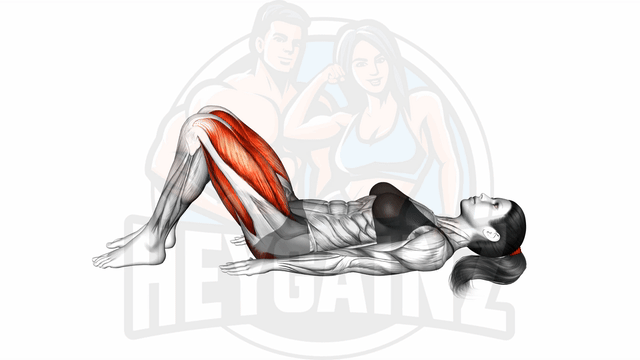
Instructions:
- 1Lie flat on your back with your knees bent and feet flat on the ground
- 2Push your heels down and lift your hips up to make your body form a straight line from shoulders to knees
- 3Lower your butt slightly without letting it touch the ground, then lift it back up
- 4Pulse up and down with small, constant movements for a set amount of time
- 5Repeat for the desired number of repetitions
Tips:
- Keep your shoulders on the floor while lifting your hips
- Tense your abs and squeeze your glutes at the top of the bridge
- The movements should be small and controlled, not large and jerky
- Always perform the exercise without straining your neck or lower back
Pulsing Glute Bridge: A Comprehensive Guide
The pulsing glute bridge is an excellent bodyweight exercise designed to engage and strengthen the hips and glutes. This movement is particularly effective for individuals looking to enhance their lower body strength without the need for specialized equipment. Whether you're new to fitness or a seasoned athlete, incorporating this exercise into your routine can yield impressive results.
Benefits of the Pulsing Glute Bridge
The pulsing glute bridge targets the gluteal muscles, providing a focused workout that helps in building endurance and strength. Additionally, this exercise can improve stability and mobility in the hips, making it a great addition to any workout regimen. For those who might prefer a variation, the pulsing single leg glute bridge is an alternative that increases the challenge by isolating one leg at a time.
Proper Technique
To perform the pulsing glute bridge correctly, follow these steps:
- Begin by lying on your back with your knees bent and feet flat on the floor, hip-width apart.
- Press through your heels, lifting your hips towards the ceiling while engaging your core and squeezing your glutes.
- At the top of the bridge, hold for a moment, then lower your hips slightly before pulsing back up for the desired number of repetitions.
- Ensure that your shoulders remain relaxed and your neck stays neutral throughout the movement.
Common Questions
Many people experience challenges when executing the glute bridge. A common concern is the question of where to feel the glute bridge. Proper form should ensure that the emphasis is placed on the glutes and not the lower back. If you're struggling to feel your glutes working during the exercise, make sure to adjust your foot placement and actively engage your glutes throughout the movement.
Comparing Elevated and Normal Glute Bridges
When considering an elevated glute bridge vs. normal glute bridge, it’s important to note that elevating your feet can increase the range of motion and intensity of the exercise. This variation can lead to a more significant engagement of the glutes. However, starting with a standard glute bridge is advisable for beginners to master the basic form before attempting elevated variations.
Tips for Success
- Focus on your breathing: Inhale as you lower your hips and exhale as you lift them.
- Keep your feet flat and pressed into the ground to maximize drive through the heels.
- Consider adding resistance through weights or bands as you progress for added challenge.
- Maintain awareness of your body alignment and avoid overarching your back during the lift.
Incorporating the pulsing glute bridge into your fitness routine can not only enhance your lower body strength but also contribute to overall stability and balance. Remember to listen to your body, adjust the exercise as needed, and enjoy the journey to stronger glutes!